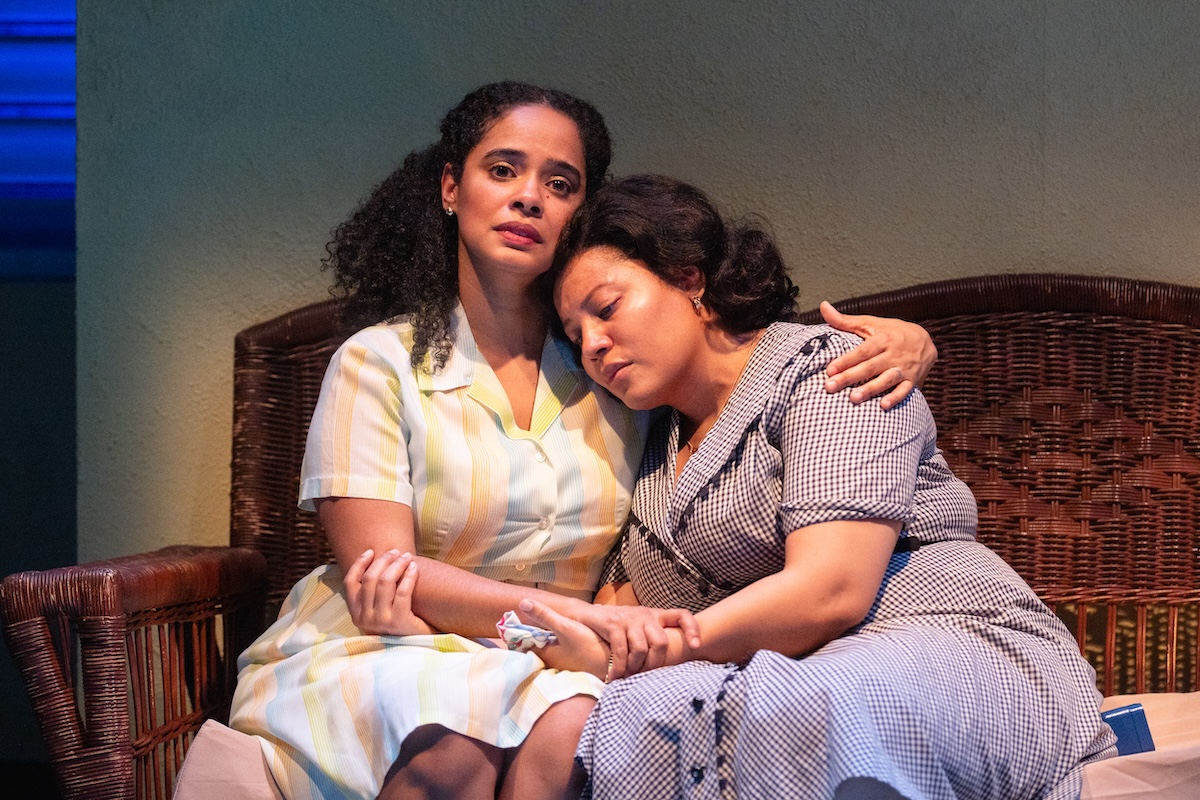Little Eyolf

and Craig Rovere in Little Eyolf
(Photo: Wendy Stulberg)
In calling Henrik Ibsen the father of modern realism, many people forget his nonrealistic plays. For example, Ibsen wrote the verse dramas Emperor and Galilean and Peer Gynt, in which poetry prevailed over natural dialogue. And, toward the end of his life, he produced symbolist drama in such plays as The Master Builder and When We Dead Awaken. It’s hard to place Little Eyolf in a particular genre because it contains traces of all of Ibsen’s influences. The Epic Theatre Center’s current production tends toward the realism that made Ibsen legendary; its reverent direction and steady pacing make for an enjoyable evening but, ultimately, cannot successfully deal with the play’s ever-shifting tone.
Little Eyolf begins simply enough as a story about a family. Alfred Allmers is a frustrated essayist returning from his retreat in the Norwegian Alps; he has trouble finishing his book on human responsibility and he cannot manage his obligations at home. Allmers neglects his wife Rita and son Eyolf in pursuit of his career but still manages to shower his sister Asta with affection — too much for his wife’s comfort. The sister turns down her most doting suitor, Mr. Borghejm, because her heart belongs to another.
A character called the Rat Wife walks into this dysfunctional household early in the play. A famous hag of Scandinavian folklore, she lures the town’s vermin to the bottom of the nearby fjord with the help of her enchanted dog, Mopsemand, yet she is not only a mystical exterminator: She had drowned an unfaithful lover before turning to rodents. When the Rat Wife and the pooch enter, they foreshadow an event that will change the Allmers family forever.
This occult element of the plot offers an opportunity for a stylized approach to the play as a whole, but director Ron Russell tries to present the narrative in a realistic way. This is a valid approach, but Russell has allowed some inconsistencies to develop. At one point, Alfred stares off into the distant fjörd — and then Rita appears at the opposite side of the stage, even though she’s supposedly returning from the same place. The fjörd continues to shift locations throughout the show.
Staging problems affect the play’s emotional life. For example, the husband and wife argue across the stage from each other when they should be closer together; the space between them dilutes the tension and strains the actors’ voices. Also, Russell sometimes has his actors stand up in the middle of speeches and gaze toward the audience in order to indicate emotional distress. This is not a good idea: Ibsen’s dialogue must be handled delicately, as it tends toward melodrama.
That’s not to say that the play lacks subtlety or subtext. Alfred and Asta never speak openly of their sexual longing for each other; blink, and it may be lost in an actor’s passing gesture or facial expression. It’s a credit to everyone involved that the production is so lucid. Its steady pace follows the script’s natural rhythm and the actors really seem to understand what drives their characters. They are also at ease with the dialogue, although some of them make poor character choices. Teri Lamm’s Rita is a gloomy yet elegant woman who takes her husband’s neglect with a heavy heart and one hand poised over her chest, but while Lamm limns her character with skill and passion, she plays the woman as too tragic. The play calls for Rita to be a seductress and a firebrand; she should have the vitality and resolve of a Hedda Gabler, even in the face of disaster.
James Wallert seems miscast in the role of the exhausted father. The character has resigned himself to death after a lifetime of contemplation, but the youngish actor does not seem convincing as a man at that stage of his life; his anger is that of a youthful hothead, not the rage of an old man. On the other hand, Melissa Friedman as his sister Asta has a youthful naïveté that suits her character magnificently. Craig Rovere’s bright-eyed Borghejm has a nice chemistry with Friedman.
Nathan Heverin has designed a backdrop that resembles a Seurat painting: Thousands of points of color create the image of the Norwegian Alps lined with evergreens. Pointillist artwork, like realistic theater, relies on precision. Every dot on the canvas must be well placed. Although the Epic Theatre Center paints a moving image of Little Eyolf, this production requires finer brushwork.










